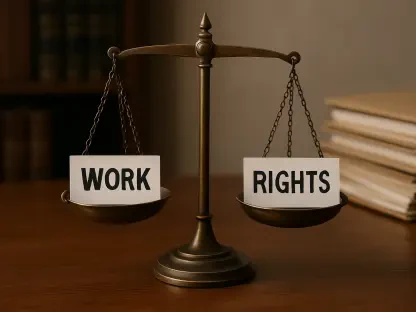In a notable development, the U.S. Supreme Court has taken up a significant employment discrimination lawsuit involving reverse discrimination claims under Title VII of the Civil Rights Act of 1964. The case at hand centers around Marlean Ames, a heterosexual female employee at the Ohio Department of Youth Services (DYS), who alleged that she faced discrimination when she was demoted and did not receive a job she applied for, while two homosexual individuals were promoted. This highly publicized case raises crucial questions about the interpretation of employment discrimination laws and whether majority group employees need to provide additional “background circumstances” evidence to support their claims, a requirement not imposed on minority group employees. The Supreme Court’s decision could potentially reshape federal employment discrimination law and establish a new precedent for reverse discrimination claims.
Case Background and Legal Implications
Marlean Ames’ case against the Ohio Department of Youth Services is not just another employment dispute; it is a pivotal moment in the ongoing debate over reverse discrimination. Ames contends that her demotion and rejection for a job promotion were unjust and based on discriminatory practices favoring homosexual individuals. The crux of the dispute lies in whether Ames needs to provide “background circumstances” evidence to substantiate her reverse discrimination claim, a requirement typically not demanded from minority group employees. The 6th Circuit Court of Appeals ruled against Ames, citing her failure to present this specific evidence. Accordingly, her appeal to the Supreme Court seeks to challenge this ruling and potentially eliminate the differential standards between majority and minority group employees in discrimination claims.
The Supreme Court’s decision to review Ames’ case is enhanced by intriguing questions from Justices Amy Coney Barrett, Brett Kavanaugh, and Elena Kagan during oral arguments. These justices appeared concerned about fairness in legal standards and the implications of upholding different evidentiary requirements for different groups. Their inquiries further underscore the importance of the case, suggesting the potential for significant modifications to current legal frameworks governing employment discrimination. Should the Supreme Court decide in favor of Ames, it could pave the way for more equitable treatment of all employees, irrespective of their majority or minority status, when filing discrimination claims.
Broader Context and Political Landscape
Ames’ case unfolds against the backdrop of substantial political and administrative changes under the Trump administration, which have significantly impacted federal employment discrimination protections. Recent Executive Orders have redefined “sex” in employment discrimination contexts, influencing the landscape of discrimination claims and DEI (Diversity, Equity, Inclusion) programs. These changes reflect a broader trend towards reevaluating how discrimination protections are implemented and interpreted within federal employment practices. Consequently, the outcome of Ames’ case may be influenced by these systemic adjustments and align with emerging political stances on equality standards.
Moreover, the administration’s targeted efforts to revise DEI programs and redefine key terminologies have sparked considerable debate and legal contention. These shifts have created an environment where longstanding interpretations are being questioned, warranting a closer examination by the judiciary. The Supreme Court’s decision could thus resonate beyond Ames’ immediate circumstances, potentially setting a precedent that influences future cases and administrative practices. Employers are advised to stay abreast of these developments, ensuring that their employment decisions remain compliant with evolving legal standards and nondiscriminatory practices.
Potential Impact on Employers and Legal Standards
The forthcoming Supreme Court ruling on Ames’ case is poised to have profound implications for employers across the country. Should the Court eliminate the “background circumstances” requirement, it would mark a significant shift towards uniform standards in evaluating discrimination claims, fostering a more inclusive and equitable workplace environment. Employers might then need to reassess their employment practices, ensuring that decisions related to hiring, promotions, and demotions are based on legitimate, nondiscriminatory reasons that withstand legal scrutiny.
Furthermore, this potential legal shift urges employers to exercise heightened vigilance in documenting and justifying their employment decisions. Employers must ensure compliance with existing discrimination laws while anticipating potential changes that may arise from the Supreme Court’s ruling. Legal experts recommend that employers prepare for possible litigation by implementing robust, transparent policies that mitigate the risk of discrimination claims. Clear, consistent documentation and practices that support nondiscriminatory decision-making will be essential in navigating this complex legal terrain and maintaining a fair working environment for all employees.
Conclusion
Marlean Ames’ case against the Ohio Department of Youth Services transcends a typical employment dispute; it represents a pivotal issue in the broader dialogue about reverse discrimination. Ames claims that her demotion and denial of a promotion were unfounded and stemmed from biased practices that favor homosexual individuals. The central argument is whether Ames must provide “background circumstances” evidence to prove her reverse discrimination claim—evidence that minority employees are usually not required to show. The 6th Circuit Court of Appeals ruled against Ames, citing her lack of this specific evidence. As a result, she has appealed to the Supreme Court to challenge this ruling and potentially remove the different standards applied to majority and minority employees in discrimination cases.
The Supreme Court’s interest in Ames’ case is heightened by probing questions from Justices Amy Coney Barrett, Brett Kavanaugh, and Elena Kagan during oral arguments. Their questions highlighted concerns about fairness and the consequences of maintaining different evidentiary standards for various groups. A decision favoring Ames could lead to more equitable treatment for all employees, regardless of their majority or minority status, in discrimination claims.









